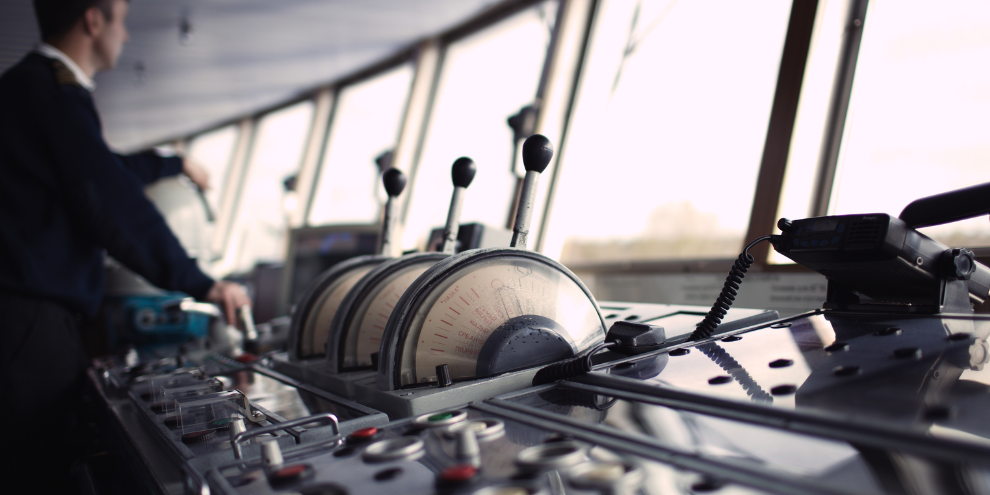We Research: Safer and more efficient maritime navigation in the Baltic Sea
Ship navigation is facing a paradigm shift. Finally, full digitalization of navigational charts (maps at sea) will help reduce the negative impacts of shipping on the marine ecosystem and make the sector more sustainable.

Maritime navigation is in need for new enhanced methods. The adoption of S-100 standards will enhance navigational products' utility and usability. New products like S-101 (electronic navigational chart), S-102 (bathymetric surface), S-104 (water level information), and S-111 (surface currents) will provide mariners with accurate, up-to-date information for safer, more efficient navigation.
Incorporating blue data will support marine spatial planning and the coexistence of various ocean activities. These advancements will also help reduce fuel consumption and emissions, preserving marine ecosystems for future generations.
New features for standard electronic navigational charts
The Baltic Sea e-Nav project aims to add new features and data sets to the S-100 standard electronic navigational charts (ENCs) and related products for safer and more efficient maritime navigation in the Baltic Sea. It involves comprehensive pilot testing, end-user feedback, and iterative refinement to ensure the products meet real-world needs.
The project promotes interoperability and harmonization across the region, enhancing international maritime cooperation. It prepares the maritime industry for future regulatory standards, ensuring compliance with the IHO S-100 implementation roadmap by 2030.
Focus on the experience of end-users
The results of the Baltic Sea e-Nav project are being studied through a comprehensive process that involves pilot testing, simulations, and real-world evaluations to ensure the navigation products are effective, reliable, and user-friendly. For example the pilot testings are simulated environments and real-world scenarios, that are used to test the new S-100 standard electronic navigational charts (ENCs) and related products. These tests are conducted both in simulators and on actual vessels to ensure a thorough evaluation of their performance and benefits in various conditions.
Mariners and navigators, as key end-users, are actively involved in the testing process. Their feedback on the products’ functionality, usability, and effectiveness is collected and analyzed. This feedback is crucial for refining and improving the navigation tools to meet real-world needs.
Based on the feedback from end-users and the results of the pilot tests, the products are iteratively refined. This involves addressing any identified issues, enhancing features, and ensuring the products meet the high standards required for maritime navigation.
The project promotes cooperation among the Baltic Sea region countries. The harmonization of products and services across borders ensures consistent standards and seamless navigation, which is studied and refined through regional cooperation and feedback loops.
Ensuring safety and efficiency
The results of the Baltic Sea e-Nav project are utilized in several impactful ways. The new updated features of the S-100 standard electronic navigational charts (ENCs) and related products provide detailed and dynamic information, greatly improving navigation safety. By optimizing routes based on detailed seafloor information and water conditions, ships can reduce fuel consumption and emissions, enhancing environmental sustainability and operational efficiency.
The project ensures interoperability and standardization across the Baltic Sea region, facilitating seamless navigation and promoting international maritime cooperation. These products will be used beyond the project's end in 2026, serving as a foundation for expanding coverage and data sets.
Overall, the Baltic Sea e-Nav project revolutionizes maritime navigation, making it safer, more efficient, and environmentally friendly while setting a precedent for future global standards.
Did you know?
- Current navigation charts are static and based on printed maps, but the S-100 standard will make them dynamic, similar to Google Maps on land.
More about:
IHO Roadmap for the S-100 implementation decade (2020 – 2030)
- Initial Phases (2020-2026):
-
- Focus on development, testing, and preparatory activities.
- Establishment of necessary infrastructures for the S-100 ecosystem.
- Operational Implementation (2026 Onwards):
- Beginning in 2026, the first operational S-100 based products, such as S-101 ENCs, are expected to be released.
- This phase includes a transition period where both S-57 and S-100 based products will be used in parallel to allow for adaptation and updates to equipment and training.
- Full Implementation (By 2029):
- From the 1st of January 2029 S-100 ECDIS mandated to all new installations
- Parallel production of S-57 and S-100 to continue into the foreseeable future
This roadmap highlights the gradual and structured approach the IHO is taking to ensure a smooth transition to the S-100 standard, providing ample time for all stakeholders to adapt to the new technologies and procedures.
